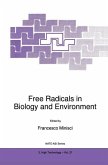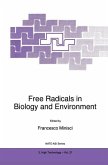This book is based on the papers presented at the "Fourth International Congress on Oxygen Radicals (4-ICOR)," held June 27 - July 3, 1987, at the University of California, La Jolla. The chapters deal with the phenomena associated with highly reactive oxygen species (hydroxy, peroxy, alkoxy, aroxy, and superoxide radicals, as well as singlet oxygen) and their peroxidation products (hydrogen peroxide, hydroperoxides, peroxides, and epoxides) as they relate to the fields of chemistry, food technology, nutrition, biology, pharmacology, and medicine. The kinetics, energetics, and mechanistic aspects of the reactions of these species and the interrelationship of oxygen radicals (or any other free radicals) and peroxidized products have been emphasized. Special attention is focused on the mechanisms of the generation of free radicals and peroxy products in biosystems and on the adverse effects of these radicals and products in humans. The topics span the continuum from the simple chemistry of model systems to the complex considerations of clinical medicine. The book also explores the mechanisms of agents that protect against free radicals and peroxy products in vitro and in vivo. These agents include antioxidants used in materials, food antioxidants, physiological antioxidants, and antioxienzymes (SOD, glutathione peroxidase, and catalases). The use of these inhibitors to prevent damage to organs being prepared for transplantation, thereby maintaining the quality of transplanted organs and/or extending their "shelf-life," also is examined.








